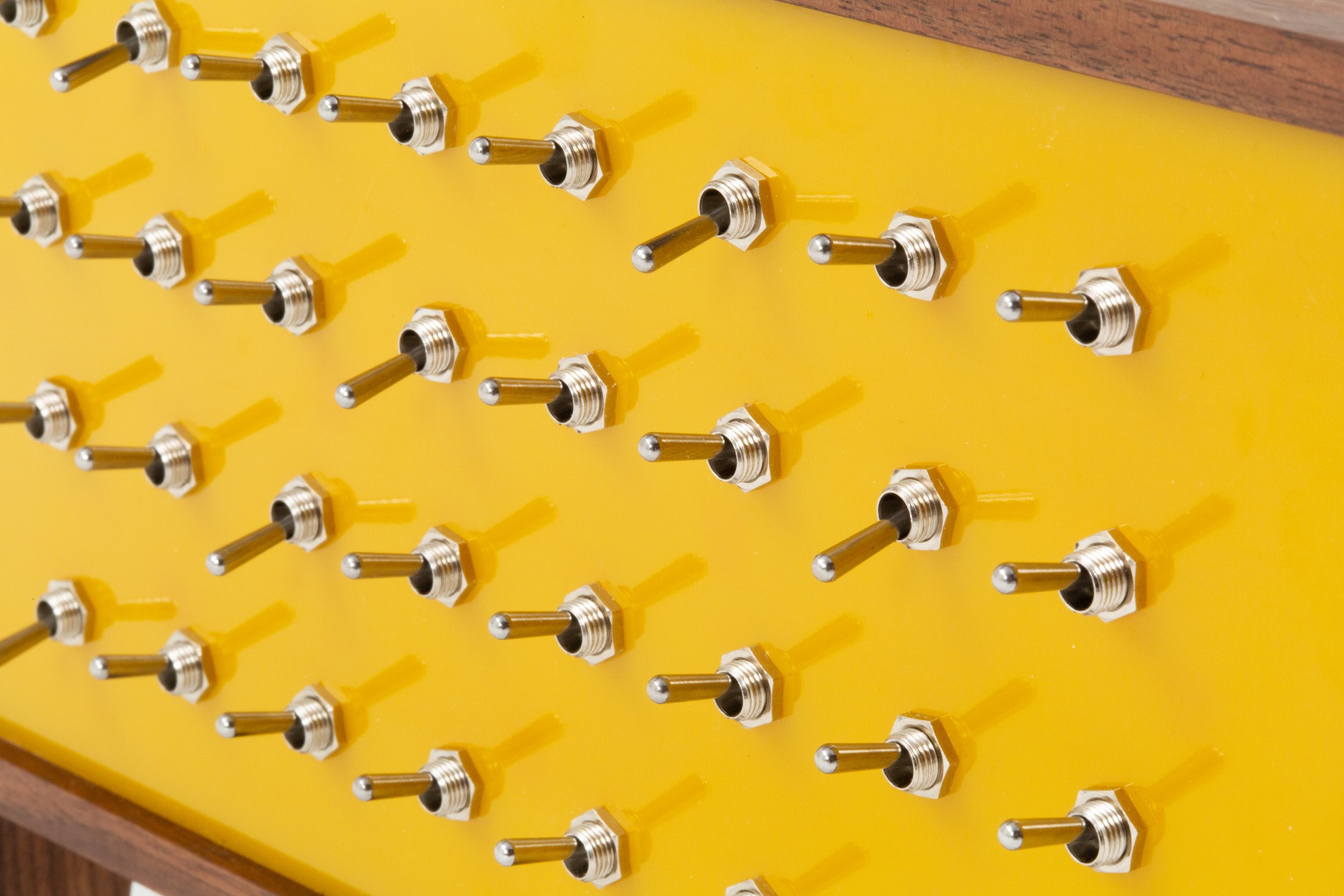The Toggle Switch
The Ambient Machine, designed by Yuri Suzuki for E&Y (image: courtesy of Yuri Suzuki).
The toggle switch was patented in 1917 by inventors William J. Newton and Morris Goldberg. One hundred and five years later, its pleasures remain hard to beat.
A toggle communicates its affordance clearly (flick it and something happens) and bluntly circumscribes its potential usage: it is either on or it’s off, with no in-between states and no space for further complexity. It is decidedly analogue, with all the limitations this implies, which sets it apart from more contemporary modes of digital control within consumer electronics, such as touch screens and voice activated virtual assistants. In an age of feature creep and increasing digital intrusion, the toggle can feel like a retro balm – a mechanical regulator on our engagement with technology. They’re nice to flick too.
The toggle is writ large in Pentagram designer Yuri Suzuki’s The Ambient Machine, a hybrid piece of consumer electronics and furniture, manufactured as a limited edition for Japanese brand E&Y. The Ambient Machine is a device for audio ambience generation (a topic that Suzki has previously explored with Disegno through the work of composer Erik Satie’s notion of furniture music), and takes form as a walnut console controlled by a bank of 32 switches set against a canary yellow backboard – a Cold War control panel, rejigged to generate domestic vibes. Arranged in eight columns, the top switches toggle different ambient sounds (from white noise to the sound of waves), with subsequent rows enabling authorial control of the resultant soundscape. “You can dictate the speed and control different patterns,” Suzuki explains. “It's quite limited [as a system], but also quite efficient: you can build up very different combinations of sounds, which is important because I feel like ambience is a necessary element for living. The design field is missing that format for sound [in spaces].”
Even after an in-depth conversation with Suzuki about The Ambient Machine, I’m not completely certain what each switch does. Nothing is labelled on the machine’s interface – you’re supposed to just try them out. Flick a switch and see what happens; keep toggling them until you have the desired result. This relative freedom plays with an important feature of a switch: while a toggle may communicate its affordance clearly, it is not always clear what precisely it is switching on and off. If context doesn’t make a switch’s purpose immediately clear, there’a a touch of frisson – what will happen when you flick the switch? The Ambient Machine revels in this allure, presenting its 32 switches blankly for the user to explore. “That was a little inspired by this early interactive game called L-Zone by Haruhiko Shono,” Suzuki explains. “It’s quite impressive. You’re in this huge abandoned town, but there is no story – just switches. If you switch one on, you discover some information, which I’ve always liked. A switch is fascinating – just by exploring it, you can discover something.”
This is part of the appeal of a toggle switch – it may be a deeply functional piece of mechanically robust engineering, but applied in the right context it still retains a little mystique (not to mention the tactile pleasure of its thunk as it clicks into position). In the case of The Ambient Machine, the toggles are mid-century-style metal stalks, emerging invitingly from a mute casing, promising direct contact with the crackling electronics within. As smart technologies and touchscreens use software to offer ever finer means of digital control, there is still something that will be lost as manual toggle switches are phased out from our electronics – a technology that has lasted 105 years, finally reaching the early days of its endgame.
Interview Oli Stratford
Photography courtesy of Yuri Suzuki


